Clancy Tucker's Blog, page 12
July 3, 2022
8 September 2022 - FUJIAN TULOU HOUSING CLUSTER - SOUTHERN CHINA
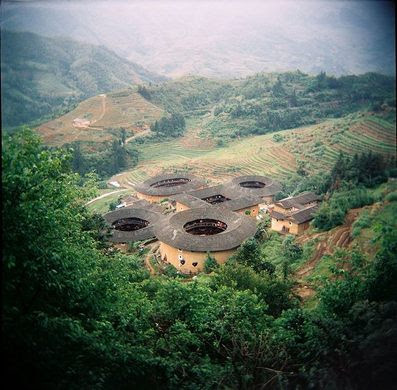
FUJIAN TULOU
HOUSING CLUSTER
- SOUTHERN CHINA -
G'day folks,
Welcome to some walled family complexes in Southern China.
Tucked into the mountains in Fujian are clusters of self-contained micro-villages. Shaped like little donuts and positioned closely together, the houses of the Hakka people are a perfect protection from the outside world.
The Hakka people, although originally from central China, have migrated throughout the last 1000 years to the mountainous regions of Southern China. As a smaller minority group, the tight-knit Hakka people needed protection from marauding bandits and other dangers in the new territory. For protection and to simultaneously create a strong community, they developed a style of house that could accommodate entire communities. With their own unique language and culture, the Hakka needed to create their own secure villages in the South.
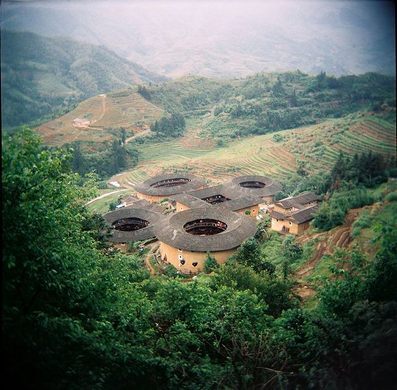
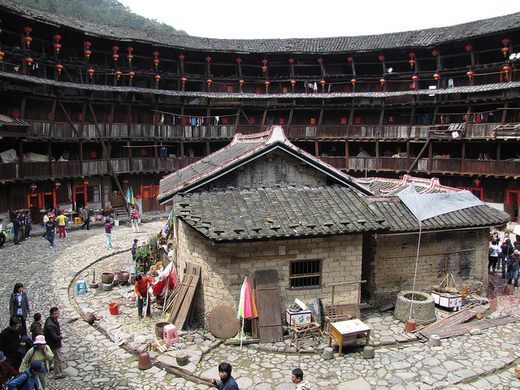
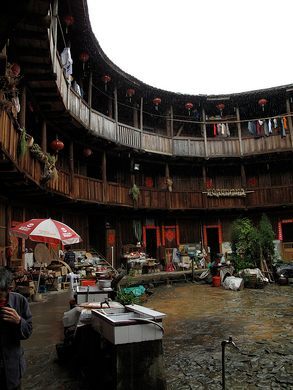

With security in mind, the Hakka began with earth packed walls sometimes six feet thick and formed into circles. After building the massive outer circle, and adding only one entrance, they developed the interiors of their new, tiny village. Completely self contained, wooden tiers were built on the inside looking out over a main courtyard area.
Some of the villages contained up to 80 families and were as large as 40,000 square meters. As perfectly defensible structures, many of the earthen buildings have survived throughout centuries, living through bandit attacks and earthquakes. The most famous cluster is the Fujian Tulou cluster, in the village of Tianluokeng.
The cluster in Tianluokeng is centered around a square building, constructed in 1796 and surrounded by the typical circular earthen villages. There are five well-preserved structures in total and they are part of a larger UNESCO World Heritage Site.
More than 35,000 earth-rammed buildings still exist across Fujian and Guangdong, and can be toured and visited.
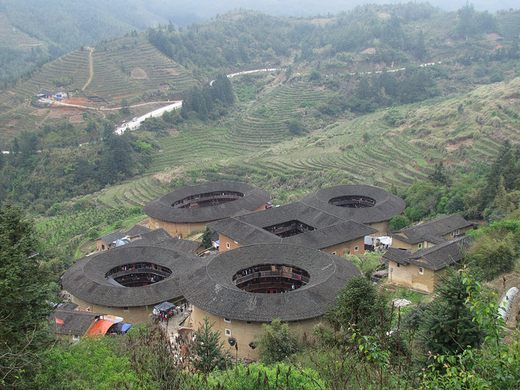
7 September 2022 - WW11 AIR RAID SHELTERS & TUNNELS - BERLIN
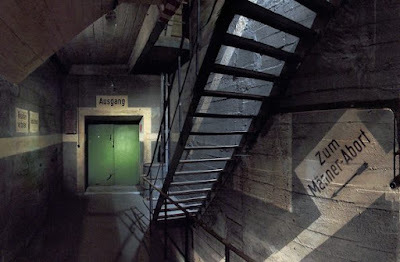
WW11 AIR RAID
SHELTERS & TUNNELS
- BERLIN -
G'day folks,
A tour of underground Berlin takes you through WWII air raid shelters and tunnels used to smuggle people out of East Germany.It’s a strange feeling to come into a dark, half-blasted bunker, see parts of stairways and cables hanging out of the wall and walk through rubble in between holes that go several meters down into the ground. It’s eye-opening to crouch down in an air raid bunker and experience how it must have felt when the situation was for real.


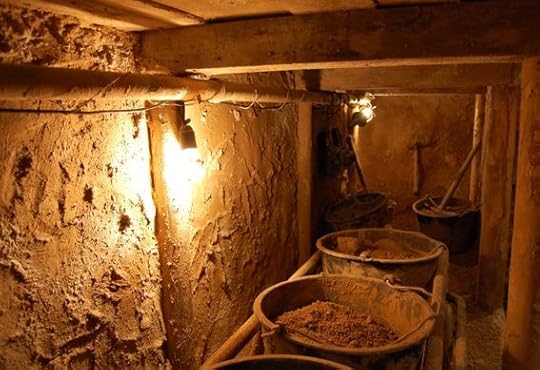

These are just a couple of examples of the unique experiences offered at Berliner Unterwelten (Subterranean Berlin). The museum offers tours of some of Berlin’s most important underground structures, such as bunkers, abandoned subway stations, air raid shelters dating back to World War II and tunnels for smuggling people out of East Germany during the Cold War.
Berliner Unterwelten was founded in 1997 to explore, document and preserve the city’s subterranean architecture. The organization’s base is in a former air raid bunker in the Gesundbrunnen subway station, now a museum—the Unterwelten Museum (Subterranean Museum)—that offers various tours through Berlin’s underground. The bunker was cleared and reconstructed by the group and transformed into a museum while maintaining its original character. Hiding on four floors below Berlin are dozens of bunkers, tunnels, walkways, canals, the route of a pneumatic postal system, storage rooms, bomb and ammunition storage, and abandoned subway stations.
Berlin, so full of history above ground, has a lot to tell in its subterranean areas as well. There are exhibits about everything from air raid bunkers to the removal of rubble from the destruction during World War II. Berliner Unterwelten found a huge file system about slave workers during the war in a forgotten bunker, helped the former workers to receive reparation pay and have an exhibition about slave workers in Berlin. Found objects such as ammunition, grenades, gas masks, etc. are on display as well. There is an exhibition about Hitler’s “Germania,” his utopian vision to rebuild Berlin. (The exhibition shows that the project was not, of course, a utopia after all.)
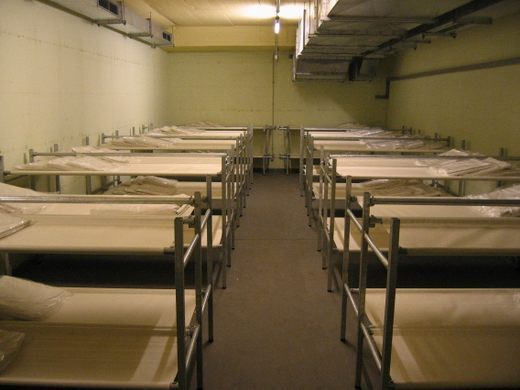
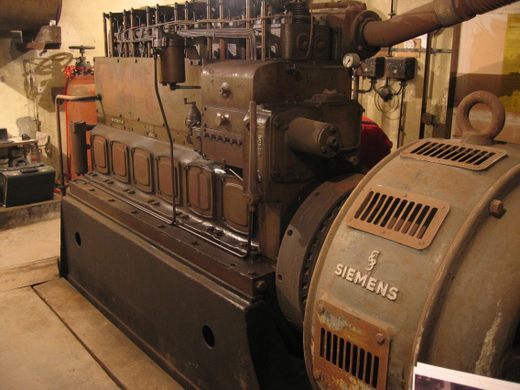
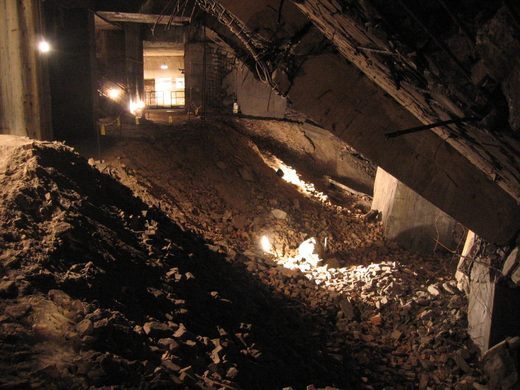
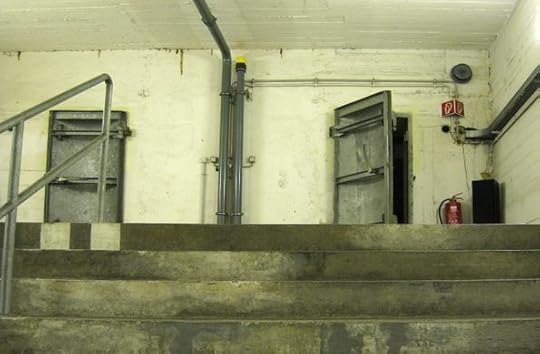
Berliner Unterwelten also works to preserve subterranean areas. They have dug and cleared out many locations, including half-destroyed bunkers, and opened them to the public. Several different tours are offered, including underground bunker hospitals, mother-and-child bunkers, flak bunkers, subterranean factories, examples of subterranean escape routes from East to West Berlin, flak towers, an underground prison, Cold War bunkers for nuclear war and a tour through the Schwerbelastungskörper, a heavy tower built to test the possibilities of erecting Germania on the sandy ground of Berlin.
July 2, 2022
17 September 2022 - FORMER NAZI ANTI-AIRCRAFT TOWERS - BERLIN
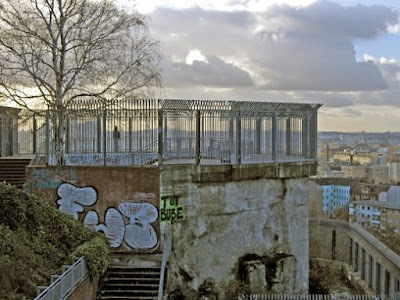
FORMER NAZI
ANTI-AIRCRAFT TOWERS
- BERLIN -
G'day folks,
These former Nazi anti-aircraft towers offer a singular view of the north of Berlin in the summer, and a sanctuary for bats in winter.Volkspark Humboldthain is a large landscaped park in the Gesundbrunnen area of north Berlin, built in the 1870s to commemorate the 100th birthday of the Prussian polymath and explorer Alexander von Humboldt. In addition to an open-air swimming pool, rose and sculpture garden, vineyard and several playgrounds, its main attractions are the two historic flak towers at the top of a World War II air-raid shelter, a monstrous concrete structure from the early 1940s that offers a singular view of the north of Berlin.
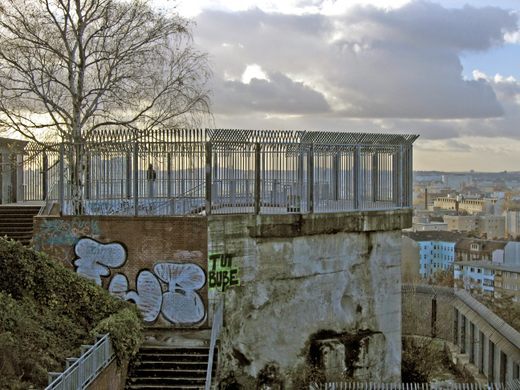
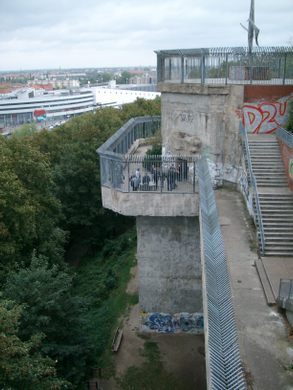
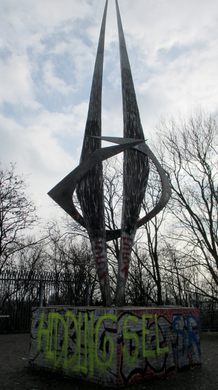
The flak towers were built by personal order of Adolf Hitler in 1940. Following the first lethal air raids of the Royal Air Force on German cities, thousands of air-raid shelters were built all across the German Reich. This massive construction effort included building so-called flak towers, huge above-ground blockhouse towers equipped with anti-aircraft guns. Eight of these structures were built in Berlin, Hamburg, and Vienna. Flak is the abbreviation of Fliegerabwehrkanone, which literally translates to “aircraft defense cannon.”
These massive concrete structures served a dual purpose: The flaks were to defend nearby factories against Allied aerial attacks and the air-raid shelters to protect 10,000s of local civilians. Much of the original park was destroyed to make room for the towers, which were built using scores of forced laborers who worked around the clock. Due to the nearby factories, which the anti-aircraft towers were built to protect, the Humboldthain area was a key target for British and American bombers. Many of the forced laborers perished during the raids.
After the war, French soldiers took down all but two of these defensive structures. The two northern towers were spared because demolition was considered too dangerous. The nearby train tracks to the north were under Soviet administration and damaging them could have sparked a diplomatic situation. In the years after 1945, Allied troops transported 1.4 million cubic meters of wartime debris to what was once Humboldthain park, creating two hills of rubble that covered most of the remaining concrete structures. This was common practice in Berlin after the war and several such rubble hills were created, including Teufelsberg (Devil’s Mountain) in Grunewald and Großer Bunkerberg (Large Bunker Hill) in the Friedrichshain district. The two Humboldthain hills were named Humboldthöhe (Humboldt Heights) and the 29-hectare park was restored to its former glory in the 1950s. The open-air swimming pool was also built during that time and remains open to this day.
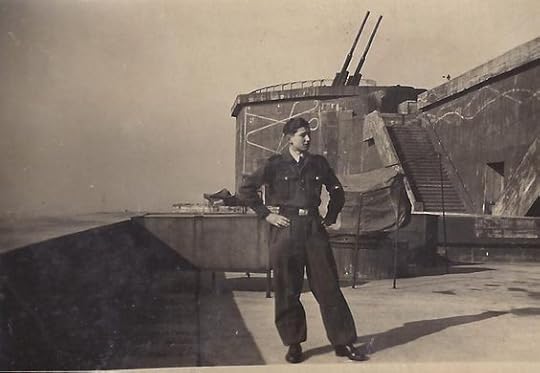
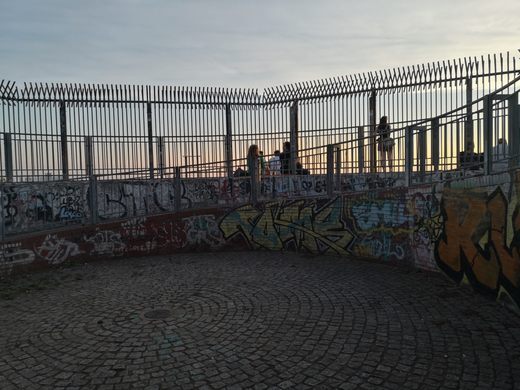
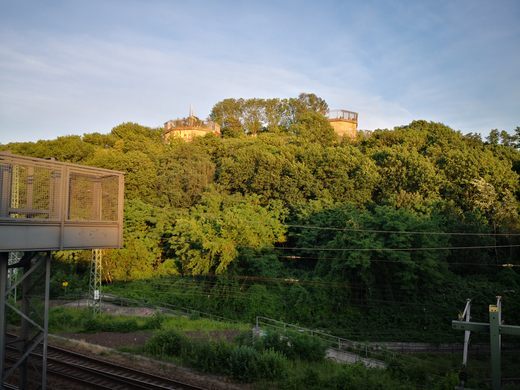
Today, Humboldthöhe is completely covered in trees. In the summer, when the trees are in full leaf, the massive bunker is almost invisible except for the two flak towers and the large aluminum sculpture by artist Arnold Schatz, which was put up in 1967. It symbolizes the two German states during the Cold War and the persisting hope for reunification. Before enjoying the view, visitors must hike up 100 meters of serpentine to the top of the tower. On the way up, there is a members-only climbing wall of the German Alpine Club.
While the view from the leafy hills, the rose garden, and the swimming pool make Humboldthain park a natural summer destination, visiting in autumn and winter also has its perks. For one, when the trees on the hill’s south side lose their leaves, the towers offer a great view of the city center south of the hill. Second, the bunker becomes a sanctuary for bats. Hundreds of the little flying mammals spend their winters in the depths of the bunker, which is why guided tours are only offered between April and October. During that time, it is possible to take tours of two of the massive bunker’s seven stories. All other stories are inaccessible due to debris.
6 September 2022 - UTICA MILLS COVERED BRIDGE - MARYLAND
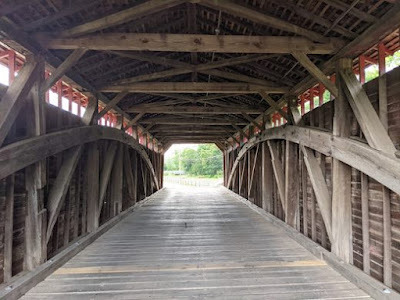
UTICA MILLS
COVERED BRIDGE
- MARYLAND -
G'day folks,
Washed out by the Johnstown Flood in 1889, the surviving portion of this two-span bridge now resides at Fishing Creek.The oldest of the three covered bridges in Frederick County, Maryland dates back to 1843, at which time it initially spanned the Monocacy River. In its first life as a 250-foot two-span bridge, it was known as the Devilbiss Road Covered Bridge.
This bridge was washed out by the Johnstown Flood in 1889. Two years later, the remaining half of the bridge was rebuilt at its present location over Fishing Creek and renamed Utica Mills Covered Bridge. Despite more than half of the original structure being lost, at 101 feet, it is the longest of the three covered bridges in Frederick County. Its Burr Arch truss is also a unique design feature among the three bridges and it still includes timber from the original bridge. Like the nearby Loy’s Station Covered Bridge, Utica Mills was reinforced with steel beams and a central pier to improve stability in the 1930s.
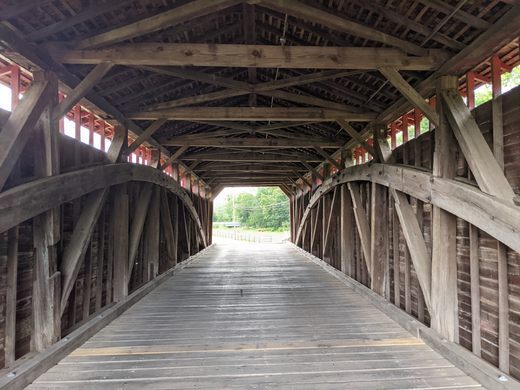
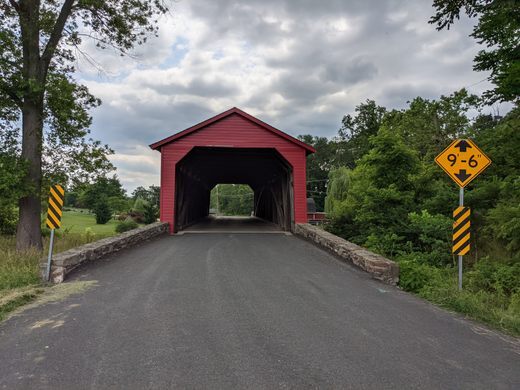
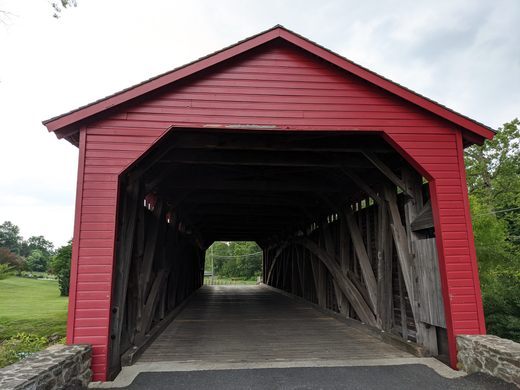
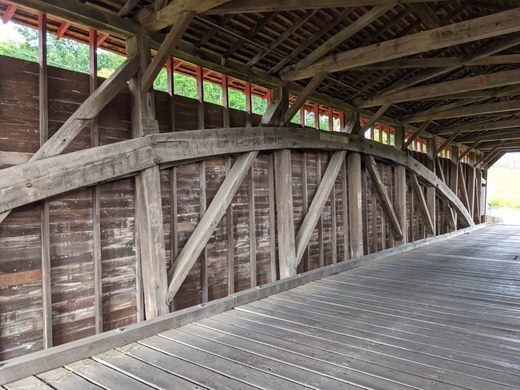
In 1993, a support beam was damaged by an oversized truck. Subsequent inspection revealed that termites and post beetles had done further damage to the timbers. This prompted a rehabilitation project that increased the bridge’s load limit to 15 tons. Another accident in June 2006 resulted in a three-week closure while damages to the west end of the bridge were repaired.
The bridge received a major renovation in 2015 as part of a larger effort to maintain all of Frederick County’s covered bridges. It is in terrific shape as of 2021.
July 1, 2022
22 September 2022 - THE MAGNIFICENT ROCCA SFORZESCA - ITALY
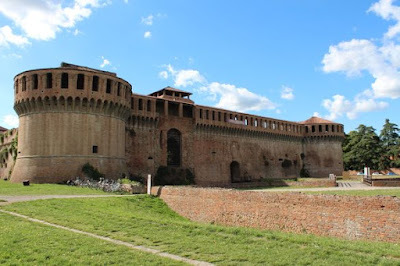
THE MAGNIFICENT
ROCCA SFORZESCA
- ITALY -
G'day folks,
This castle was once the home of one of the most powerful women of the Renaissance.Rocca Sforzesca is a stunning example of the evolution of castles and fortifications between the Middle Ages and the Renaissance. Its origins date back to 1261 when a 10 tower structure was built on the remains of a pre-existing tower from the 11th-century. At the end of the 15th-century, the rectangular towers proved to be completely unsuitable for countering firearms, such as cannons. Between 1472 and 1484 the towers were changed into thicker circular structures and renovated by the Sforza family, along with the rest of the castle.
One of the ancient rectangular towers is still recognizable, incorporated with the south-east tower while the central one, il Mastio, was maintained.
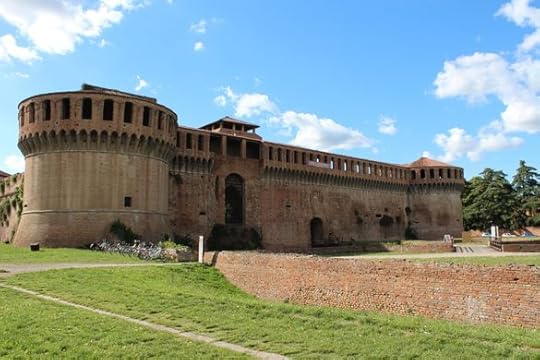
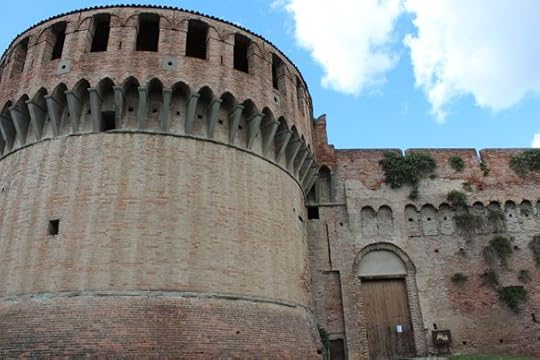

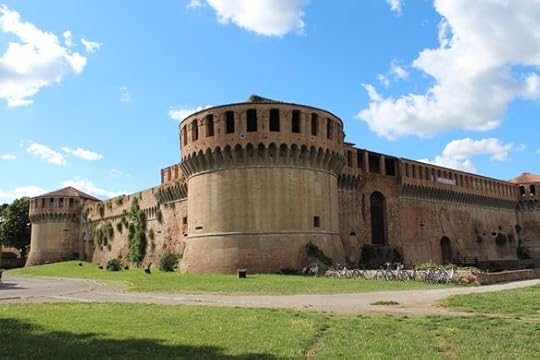

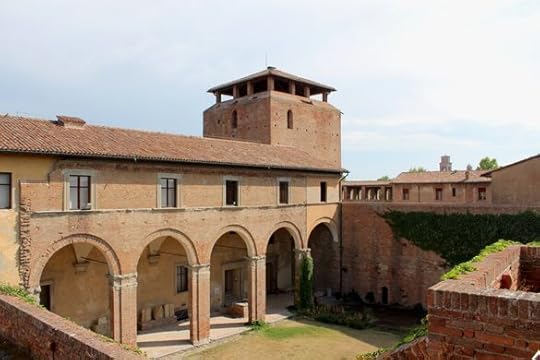


At the end of the 15th-century Caterina Sforza, one of the most important female figures of the Renaissance, also known as Lady of Imola and Forli, lived in the castle. She was an example of Machiavellian resoluteness. Niccolò Machiavelli, the famous diplomat and writer wrote that in 1488 she came under attack and her enemies threatened to kill her sons. To avoid this fate, she climbed to the top of the castle, raised her dress, and shouted, “Kill them if you will, I have the means to make many more!”
Between 1499 and 1500 Cesare Borgia, Duke of Valentine and the illegitimate son of Pope Alessandro VI, attacked the region and conquered Rocca Sforzesca. He later captured Sforza in the castle of Forli’, as she put up a final stand with weapons in hand. Many legends and tales have arisen over the centuries about Sforza.
It was said that Sforza, named by many “Tygre” the Tiger of Imola and Forli’, used to throw her enemies into the well of Rocca Sforzesca, which was reinforced with sharp blades. Another story claimed that she built the castle with the help of the devil. Local residents say that her ghost appears to visitors who get too close to her treasure hidden in the castle’s dungeon.
Perhaps the most popular legend states that during a full moon, it’s possible to see her standing on the wall of Rocca, waiting for the arrival of the Borgia army. She was also an expert in alchemy and wrote the book, Liber de experimentiis Catherinae Sfortiae.
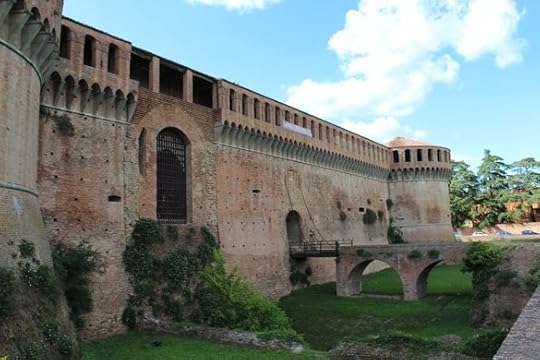
13 September 2022 - MAJESTIC CASTLE of ROCCASCALENGNA - ITALY

MAJESTIC CASTLE
of
ROCCASCALENGNA
- ITALY -
G'day folks,
This precariously perched fortress was once ruled by a crow-worshipping baron.Roccascalegna is a small village in the Majella region of Abruzzo in central Italy. The village, thought to be founded by the Lombards around 600, sits at the foot of the impossibly-built Castle of Roccascalegna.
This extraordinary fortress is perched on the edge of a massive basalt cliff, and was likely built to guard the Secco Valley below. The rocky outcrop looks out over lush meadows and olive orchards, but the idyllic setting has a rough past. In the centuries since it was first built, the valley has seen several invasions and pirate incursions from the Adriatic coast.



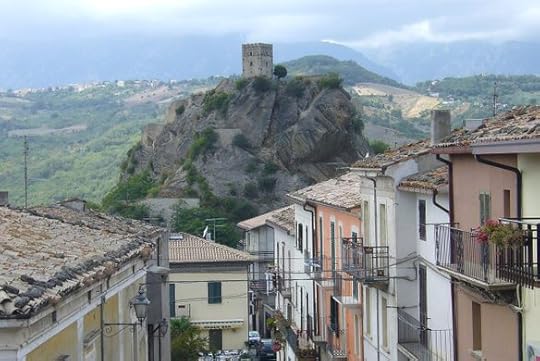
Starting in the 15th century, the fortress was rebuilt and enlarged, but over time its fortunes changed. Around 1700 the castle was largely abandoned, and years of neglect, weather, and looting led it to a state of disrepair. In 1985, the town of Roccascalegna took ownership of the structure and began restoration works that took more than 10 years to complete.
The castle’s most famous legend is that of the Corvo de Corvis, or the Crow Baron, who, in the 17th century, introduced the right of jus primae noctis, which held that all newlywed brides of his fiefdom were obligated to lie with him on their wedding night. Stories say the baron was stabbed to death, either by one of the brides or her husband in disguise, and upon dying he left a bloody mark on the walls which could never again be washed away. Some claim that the mark is still visible within the castle, as is the restless spirit of the Baron.
Nowadays, visitors can visit the keep, the inner courtyard, the prison, the chapel, and the castle walls, which provide an exceptional view on the landscape below, which includes Majella National Park. As of 2018, you can also rent the castle as an event venue for €100 (about $110).
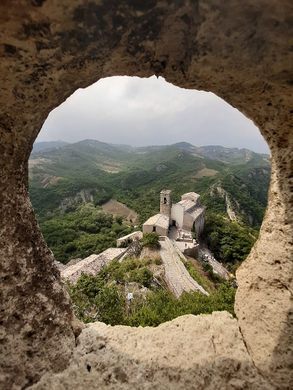
5 September 2022 - ANCIENT MALBORK CASTLE - POLAND
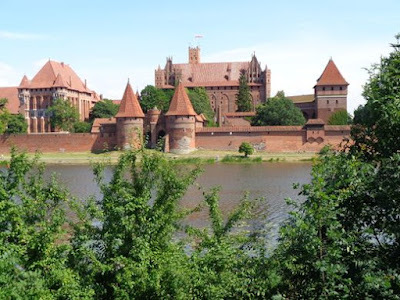
ANCIENT MALBORK CASTLE
- POLAND -
G'day folks,
This 13th century Gothic brick castle is the largest in the world by surface area.Sprawled over 51 acres, the Castle of the Teutonic Order in Malbork (better known as Malbork Castle) was built by knights of the Teutonic Order. They first came to the Baltic region as missionaries, ostensibly to convert the pagans to Christianity. In time they grew in wealth and influence, periodically challenged the authority of local rulers, acquired vast swathes of land and built fortified monasteries. Malbork Castle was the seat of power of the Teutonic Knights for over 150 years, and their Grand Masters resided in the impressive palace.
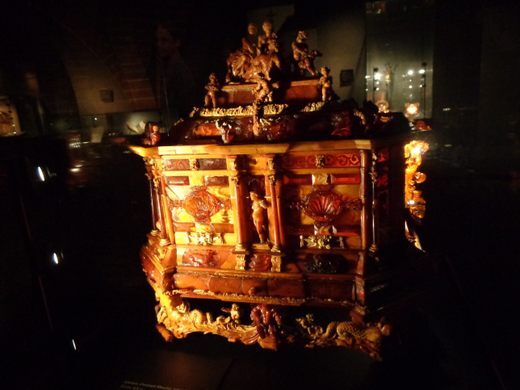

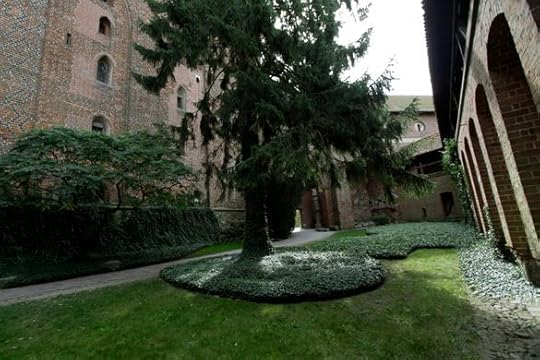
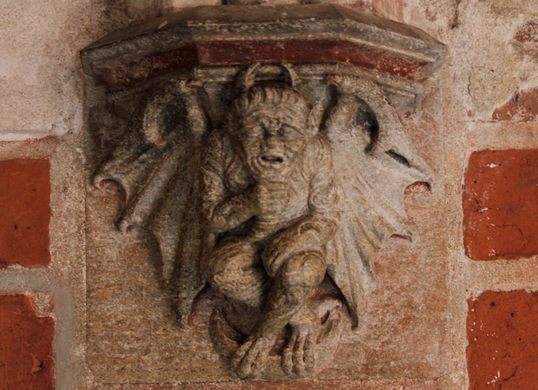
Instead of a single structure, Malbork Castle is a complex of three castles encircled by formidable defensive walls that are connected by gates and bridges. The complex’s entrance gate is located at the Lower Castle, which historically housed the stables, the armory, workshops, and a brewery.
The Middle Castle was where the Grand Masters lived and entertained. The Great Refectory is a massive 450-square-foot hall with under-floor heating, a magnificent vaulted ceiling, and high Gothic windows. Lavish banquets were held in the great hall. In one of the Grand Master’s private rooms, one can admire a ceiling painted with a delicate grapevine motif.
The High Castle was primarily a monastic residence. Of interest is the privy tower, the first of its kind commissioned by the knights and later replicated in other castles built by them. The knights worshipped at St. Mary’s Church, which is accessed through an elaborately carved doorway. It has a striking vaulted apse and beautiful, though fading, murals decorating the walls. A medieval well sits in the middle of the courtyard, a source of water in times of a siege. It suffered near destruction during World War II and has since been meticulously restored. It was designated a UNESCO World Heritage site in 1997.
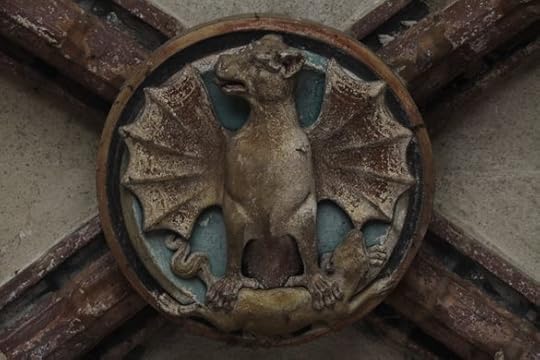
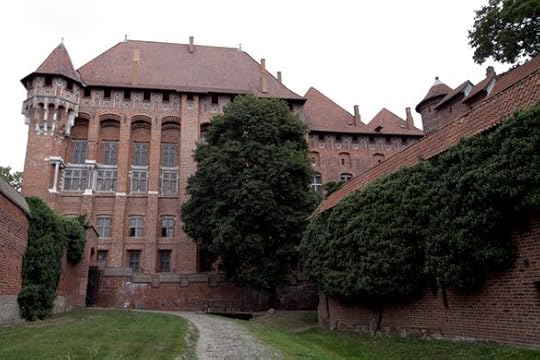
June 30, 2022
16 September 2022 - ANCIENT LOMBARD TOWER - CATINO, ITALY
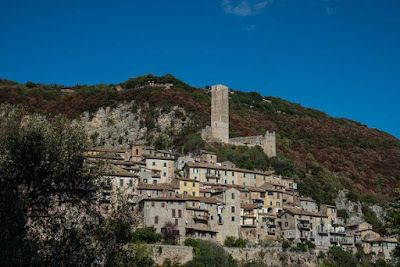
ANCIENT LOMBARD TOWER
- CATINO, ITALY -
G'day folks,
This seventh-century fortification marked the western border of the Lombard duchy of Spoleto.On the foothills of the Sabine mountains, overlooking the countryside that stretches all the way to Rome, a solitary tower stands guard above the hamlet of Catino, which is part of the town of Poggio Catino.
Poggio Catino is named after the enormous karstic sinkhole that hides beneath the hamlet and has helped make the site a formidable fortress. In the early Middle Ages, the area marked the border between the Roman/Byzantine territory of Rome and the Lombard duchy of Spoleto, and one of the main thoroughfares through the mountains.
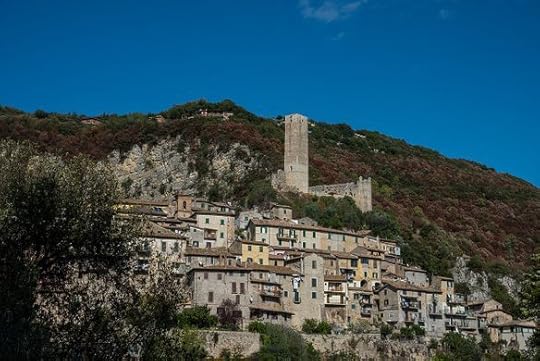
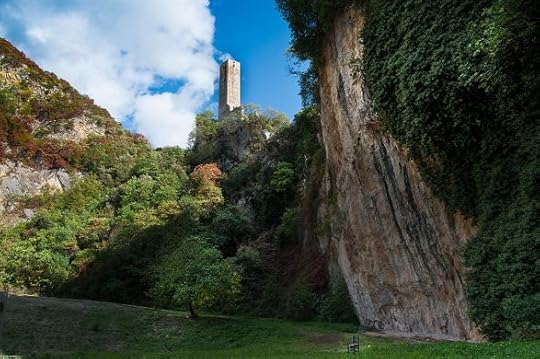

The ruins of the fortress, which is mentioned in the work of the town’s most famous citizen, Gregorio da Catino, in his Regestum Farfense, are perched on an outcrop above the hamlet and surround a central keep, with an enormous pentagonal tower (108 feet tall) and that seems unassailable. It’s also survived earthquakes of the past few centuries.
That may not have been by accident. To make the tower lighter and more resilient, the Lombard lords had the upper section built of spongolite, a stone made from fossilized sponges, which could be extracted nearby.

4 September 2022 - ENORMOUS SINKHOLE IN ITALY
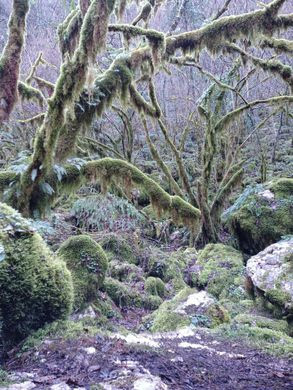
ENORMOUS
SINKHOLE
IN ITALY
G'day folks,
This enormous sinkhole hides a secret world created from divine wrath.The mountains and forests surrounding the medieval village of Roccantica are wild and lush. They also hide several beautiful sights, such as hermitages and waterfalls but above all, the enormous and unusual sinkhole locally known as “U’revotano.”
This enormous abyss is a common geological phenomenon in Central Italy, also known as doline, in which karstic processes of erosion cause the collapse of a limestone roof over an underground cavern. This natural occurrence has inspired a local legend in which a village is known as Revotano.

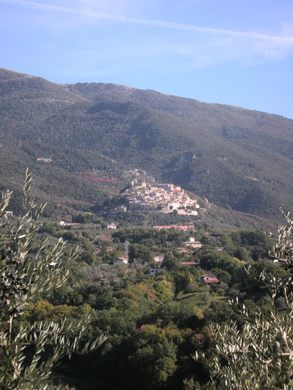
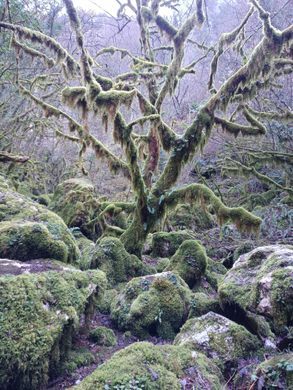
According to local tradition, the village was inhabited by blasphemous residents and was swallowed up by divine wrath. As the story goes, the young wife of a local inhabitant who had gone to the stream to wash her laundry with her son suddenly heard a voice. The voice warned that divine punishment was going to befall her village. A great earthquake shook the land and the voice-guided them to safety. Revotano was swallowed into the sinkhole
The abyss is 820 feet (250-meters) wide and 426 feet (130 meters) deep. There are a few viewpoints that provide an understanding of the enormity of the sinkhole. A slippery, unmarked trail leads (with the help of a few ropes) to the bottom of the sinkhole where a fragile world of moss-carpeted trees and boulders resides.
The air is colder and more humid at the bottom of the sinkhole, allowing the moss and ferns to grow lush and in vivid hues. As this is a very fragile and unusual example of nature, take special care not to damage the vegetation when visiting.

June 29, 2022
12 September 2022 - THE HOTTEST PLACE ON EARTH - ETHIOPIA
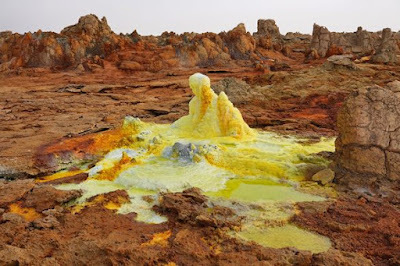
THE HOTTEST PLACE
ON EARTH
- ETHIOPIA -
G'day folks,
Welcome to the hottest place on the planet.
In the north of Ethiopia, hours from any populated area, is a vast expanse of brutal landscape unlike anywhere else in the world.
Dallol, in the Danakil Depression, is a boiling, salt-formed world completely hostile to human visitors. The Danakil Depression, also known as the Afar Depression, holds the distinction of being one of the lowest and hottest parts of the world.

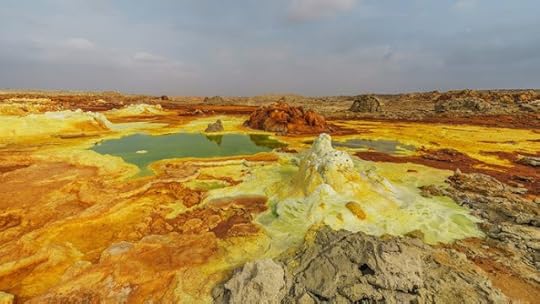
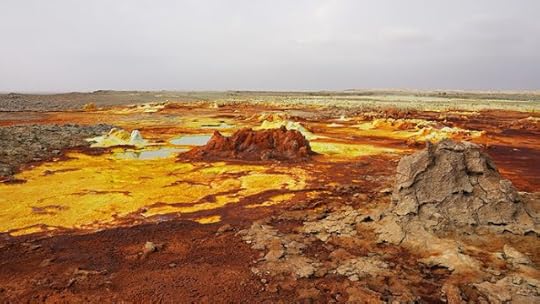

On top of average temperatures of 94 degrees Fahrenheit, Dallol itself is surrounded by boiling hot springs, bringing hot minerals and toxic gas bubbles to the surface. Despite making Dallol uninhabited, these geological forces have actually made the area somewhat picturesque, coloring the lowlands with rusty orange, yellow, and green salt formations.
Dallol is extremely unwelcoming to inhabitation. However, a number of people have still ventured into the region for work, due to the high deposits of table salt in the area. Expeditions funded by Europe prior to World War I were shut down and dismantled throughout the first half of the 20th century. Later attempts by American, Indian, and Italian companies have resulted in thousands of mines throughout the region, but no permanent settlement.
Although it is now uninhabited, small structures made of salt bricks were created by the Afar people, when they were employed by mining companies throughout the 20th century. However, the majority of these have been abandoned and few traces of these settlements still exist.
Near the Dallol area in the same region is Erta Ale, the “Gateway to Hell,” a smoking volcanic terrain complete with its own lava lakes. It is an equally harsh and unforgiving environment, and nearly impossible to reach without great difficulty.






